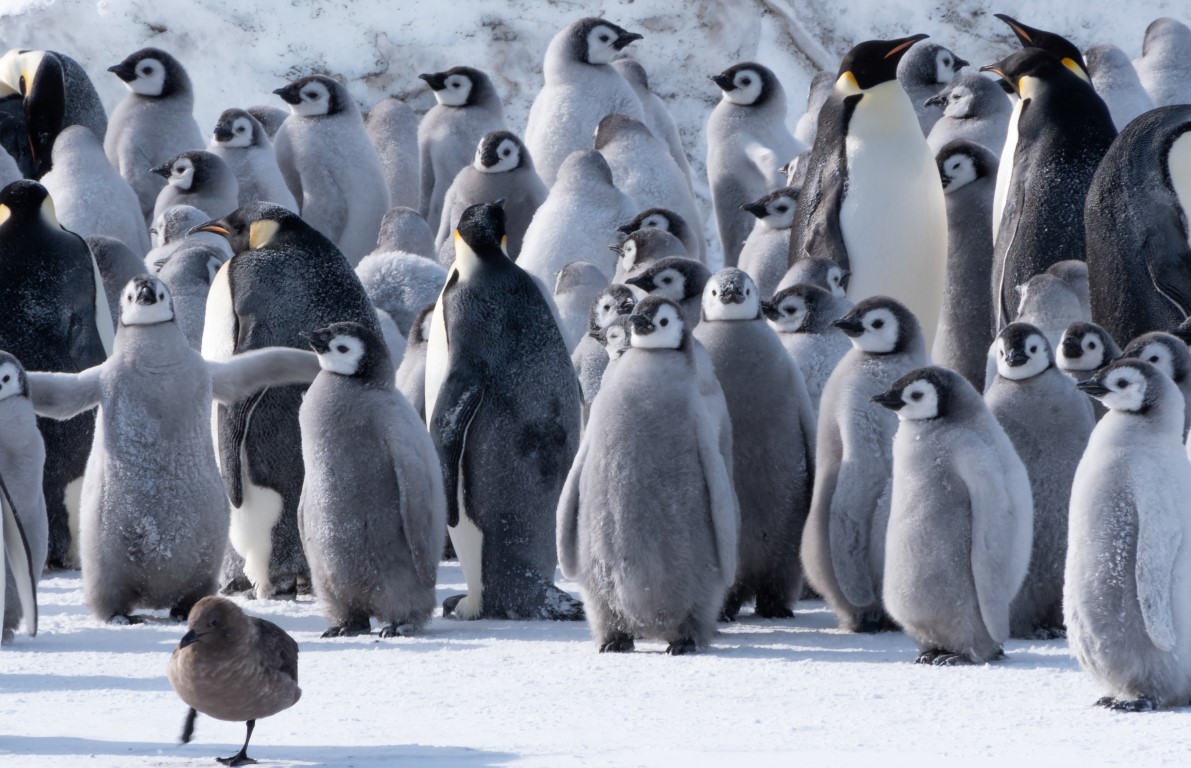
Scott Base – GPS-based technology is helping researchers to learn more about Antarctica’s majestic emperor penguins’ feeding patterns as part of efforts to protect the species from environmental threats.
Birds at the Cape Crozier emperor colony have been wearing trackers akin to Fitbits so researchers can record how far the penguins need to go to find food, how deep they dive – even whether they are walking, swimming or sliding on their tummies.
The NZ-US collaboration between the National Institute of Water and Atmospheric Research (NIWA) and San Jose State University’s Moss Landing Marine Laboratories is part of the Ross Sea Region and Monitoring Programme (Ross-RAMP), a five-year research effort evaluating the effectiveness of the Ross Sea Marine Protected Area (MPA).
Rare footage by Antarctica New Zealand videographer Anthony Powell has captured the team at work: the emperor penguins must be caught and fitted with a data logger, before being released to feed.
When the birds return to shore, the research team has to find them using a scanner to detect a radio transmitter. Then the birds are recaptured and the data loggers retrieved.
The multi-year research has shown just how far the penguins might go while fuelling-up to feed their chicks, with one penguin travelling over 1000km and diving to a depth of 486m during a 16-day foraging trip.
The new insights are thanks to GPS-based technologies that can track the penguins every move.
The technology is not that dissimilar from what everyone carries on them on the daily, such as a cellphone, or a smart watch.
The research is providing baseline data on the foraging ecology and habitat use of the penguins. Penguin colonies’ well-being can reflect both drastic and subtle changes occurring in the food web.
Emperor penguins, which depend on sea ice to breed, are an indicator species of climate change. With no action to reduce emissions, the populations are projected to decline close to extinction by the year 2100.
The research was funded through the Ministry of Business, Innovation and Employment’s Endeavour Programme and a National Science Foundation Polar Programme’s grant, with logistical support from Antarctica New Zealand and Scott Base.
GPS-based technology is helping researchers to learn more about Antarctica’s majestic emperor penguins’ feeding patterns as part of efforts to protect the species from environmental threats.
Birds at the Cape Crozier emperor colony have been wearing trackers akin to Fitbits so researchers can record how far the penguins need to go to find food, how deep they dive – even whether they are walking, swimming or sliding on their tummies.
The NZ-US collaboration between the National Institute of Water and Atmospheric Research (NIWA) and San Jose State University’s Moss Landing Marine Laboratories is part of the Ross Sea Region and Monitoring Programme (Ross-RAMP), a five-year research effort evaluating the effectiveness of the Ross Sea Marine Protected Area (MPA).
Rare footage by Antarctica New Zealand videographer Anthony Powell has captured the team at work: the emperor penguins must be caught and fitted with a data logger, before being released to feed.
When the birds return to shore, the research team has to find them using a scanner to detect a radio transmitter. Then the birds are recaptured and the data loggers retrieved.
The multi-year research has shown just how far the penguins might go while fuelling-up to feed their chicks, with one penguin travelling over 1000km and diving to a depth of 486m during a 16-day foraging trip.
The new insights are thanks to GPS-based technologies that can track the penguins every move.
The technology is not that dissimilar from what everyone carries on them on the daily, such as a cellphone, or a smart watch.
The research is providing baseline data on the foraging ecology and habitat use of the penguins. Penguin colonies’ well-being can reflect both drastic and subtle changes occurring in the food web.
Emperor penguins, which depend on sea ice to breed, are an indicator species of climate change. With no action to reduce emissions, the populations are projected to decline close to extinction by the year 2100.
The research was funded through the Ministry of Business, Innovation and Employment’s Endeavour Programme and a National Science Foundation Polar Programme’s grant, with logistical support from Antarctica New Zealand and Scott Base.

